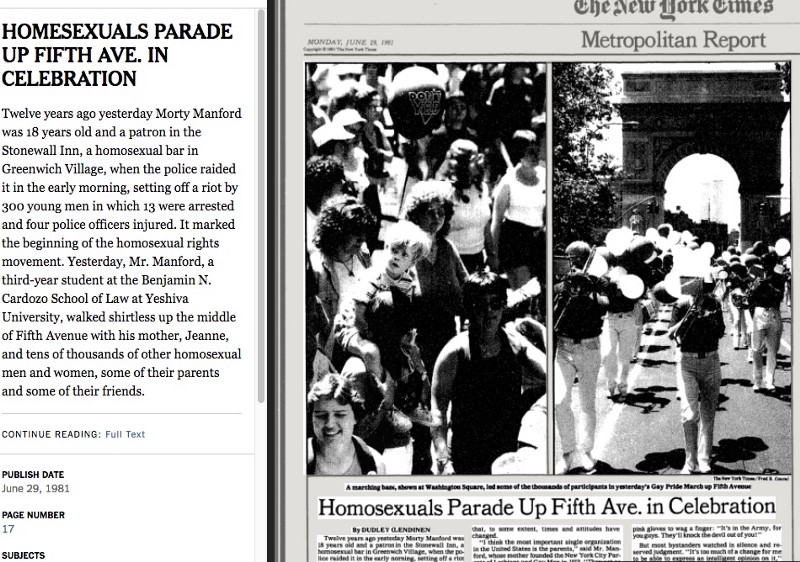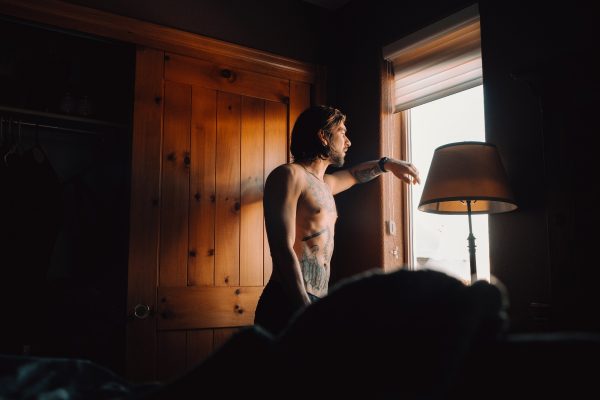Pictured here was my second or perhaps third gay pride parade, which I remember as particularly fun and joyful — even if the Times still used “homosexual” instead of “gay.” While marching, my friend Patrick and I fell in with some cute men who invited us back to their place for margaritas, but there was oddly no whiff of potential sex in the air. One of the guys simply slipped “The Wizard of Oz” into the VCR, and, pleasantly stoned (this was back when pot wasn’t stupidly strong), I felt like I was watching the movie for the first time. It was such a perfect (if accidental) metaphor for the emergence of gay life to come in the post-war years. Like Dorothy, gays went from a black and white world to a color one. Unlike Dorothy, we never wanted to go home again. Nor could. That’s the thing about opening Pandora’s box. You can’t close it again.
I remember thinking it was the perfect day. And now, looking at that date, I realize it was.
This article ran on June 29th, 1981. Four days later, on July 3, 1981, we read that first headline: “Rare Cancer Seen in 41 Homosexuals.”
By December of that year, we knew “GRID” was here to say, albeit soon enough with a new acronym.
Although I’d been a practiced denizen of the pleasures and pitfalls of Manhattan in the late 70s, my real loss of innocence came with the gradual realization that the hunt for sexual and emotional intimacy that was at the center of my life could also be the cause of my early death, and those of my closest friends.
By framing AIDS in my mind that way, I never lost any sense of gay pride. I had simply contracted a virus that had discovered an efficient way to transmit itself. I never took it personally, and never felt any shame over it.
I got HIV just by being a normal human being, looking for love. I will always be proud of that.
MCO 2019





